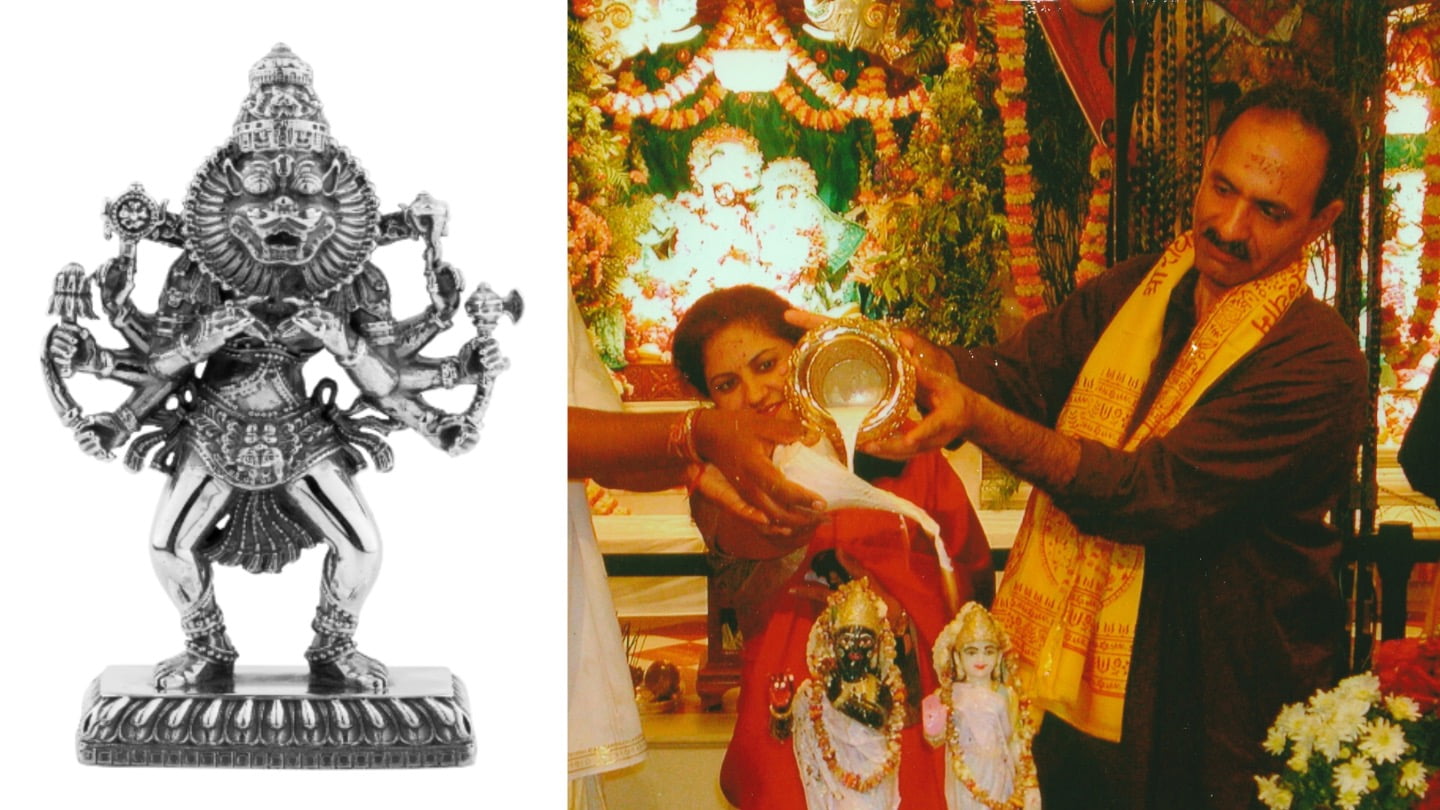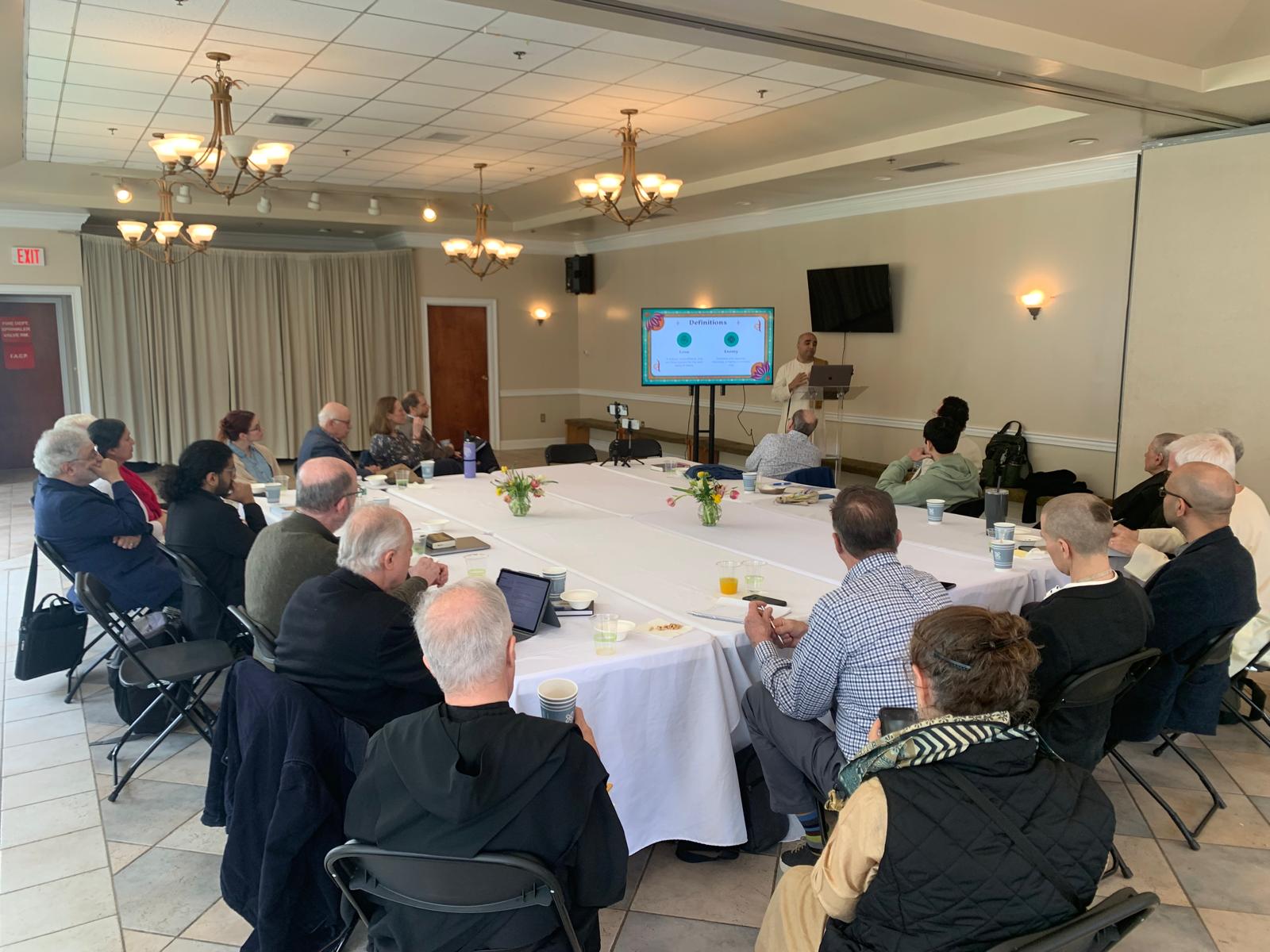Who Is a Member of ISKCON? #2 The ISKCON Apple
By Kripamoya Das | Jun 22, 2012

The ISKCON Apple. Its ‘Apple’ all the way through, but there’s a ‘core’ and a ‘skin’ and we need to know the difference.
I would like to share this picture of the ISKCON organization. Not everyone will agree with me, I know, but I think it adequately depicts progressive involvement in our movement – or any movement, for that matter – and might help to define layers of membership.
Some days ago I wrote a post about six ‘types’ of membership. Today its all about ‘layers.’ Let me explain what I mean.
There are different types of members of ISKCON characterized by their self-identifying with various aspects of the movement’s philosophical beliefs, spiritual practices and activities. They are all members because they want to be; because they like some aspect of the movement; and because they value it in their lives and would – generally speaking – like to see the ISKCON cause reach a greater audience.Yet their commitment is of different intensities. Those with lower commitment are content to avail themselves of opportunities presented by the organization. Those with higher commitment are often the ones who create opportunities for others, who pass the values and wisdom on to the next generation. Not always, of course, but quite often.
In an apple the core is the biological element that serves to create the next apple tree, and with it the next generation of apples. The genetic code for a new tree (or an entire orchard of trees) is stored there. It doesn’t taste very nice, but it is essential to the perpetuation of ‘Apple Tree.’ The core doesn’t exist independently of the apple though, it needs the protection of the rest of the fruit if it is to do its job completely. In any social entity the core is where the values, culture and wisdom will be passed on from one generation to the next. Sociologists say that any social entity has to survive for a minimum of three generations if the values – the ‘social genetic code’ – is to survive. This places a certain pressure on this ISKCON generation to preserve the ‘ISKCON genetics’ for at least another hundred years. Only when we’ve successfully done that can we get to grips with our projected ’10,000 years.’
So it is the level of commitment – not only to developing ones personal spiritual potential but to sharing that and helping others – that will be influential in determining how any particular member will be instrumental in producing the next generation of members. And responsibility for producing the next generation of members is one way of identifying a member’s ‘layer’ within the ISKCON Apple.

Here is a diagram I am currently using to illustrate the membership ‘layers’ of ISKCON. It also looks like an apple. Previously I would have used a pyramid shape, but some of my readers said: “No, too hierarchical.” So here we are, a new, more rounded, way of looking at ISKCON. It won’t be the final diagram, of course, and I’ll take any suggestions my readers might have.
The idea in this diagram is that it represents all those persons who choose to identify with ISKCON. And remember that they are voluntarily choosing to self-identify themselves as ‘members’ of ISKCON because the organization serves at least one of their six interests, as explained in #1.
I should mention here that I reject the outdated definition of ISKCON that describes our organization as ‘a confederation of temples, farms, schools and restaurants.’ The last time that ISKCON could be accurately defined as simply as this was about 25 years ago. We have changed. Unfortunately, this simplistic definition can still be found in the back pages of our BBT publications. Perhaps its time to update the image we project to the public. The actual composition of contemporary ISKCON is predominantly individual practitioners served by local meetings, visiting teachers, member support groups and worship centres, with additional gatherings at festivals, retreats and celebrations. But I won’t argue for that mouthful to be put in all our books!
So when I use the term ISKCON I actually mean the entire aggregate of membership, wherever it happens to be physically located. This makes all of our centres – and the numerous ‘affiliates’ – all sub-groups of ISKCON. Essential sub-groups and highly influential sub-groups they may be, intense concentrations of highly committed members for sure, but sub-groups nonetheless.
With that in mind, here’s some ‘layers’ of the ‘ISKCON Apple.’
CURIOUS – Where does the ISKCON organization begin? Perhaps wherever people are curious, because that curiosity, for some of them, may begin their path to greater involvement.
CROWD – They turn up in great numbers at public events, temple services, Rathayatra festivals. They are a bit more than just curious – because they’ve participated before – but not enough to be termed our ‘regulars.’
CONGREGATION – This level of member comes regularly but still hasn’t committed to undertaking any personal transformation efforts other than turning up – regularly!
COMMITTED – To get the benefit of anything, whether it be japa, reading, sadhu-sanga, financial contributions or practical volunteering, some form of commitment is required. First comes thinking, then feeling then willing – then doing something we haven’t done before, and doing it regularly. Commitment to belief systems, personal spiritual development practises, and the practical support of the group are solid changes in the member’s life. As such they are a new layer of involvement.
CORE – This level of participation in the organization is required to substantially transfer the values, beliefs and practices – and the physical resources – over to the next generation of members. The core activities may be done by those living communally; by the newest, youngest converts, or by seasoned members working more independently. Wherever there are activities that will pass on the ‘genetic code’ of the organization – that is the ‘core’ of ISKCON.
Previously, in the very beginning, ISKCON was mostly a young, green ‘core,’ now there’s a healthy, thick fruit wrapped around it. ISKCON isn’t the same as it was ‘in the early days’ because it was never intended to look like that permanently. Small green apples with little sweetness and colour often grow into big, juicy red ones. We should not be surprised.
However, its important that our different types of members, in all the layers, move to the level of next commitment; that will keep the movement growing well.














